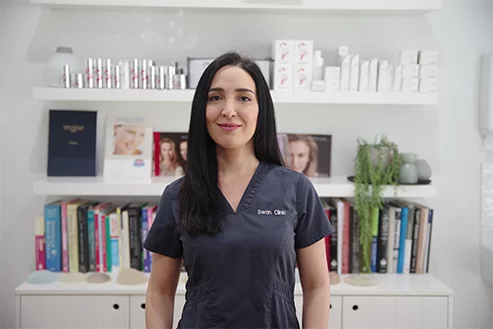BREAST IMPLANT EXCHANGE
Why Consider a Breast Implant Exchange?
- Implant Complications: Some implants may develop issues such as rupture, leakage, or capsular contracture (scar tissue that tightens around the implant), which can require replacement or removal.
- Cosmetic Concerns: Individuals may choose to change the size, shape, or type of their implants due to personal preference or changes in their body over time.
- Implant Lifespan: Breast implants are not considered lifetime devices. Typically, implants may need to be replaced after 10 years, although this can vary depending on the individual and implant type.
Options for Breast Implant Exchange
- Implant Replacement: This involves removing existing implants and inserting new ones, which may differ in size or type (such as saline or silicone implants).
- Implant Removal: Some patients opt to have their implants removed without replacement.
- Revision Techniques: These may include adjustments to the implant pocket (for example, changing the implant placement from under the muscle to above it, or vice versa), or correcting asymmetry.
Benefits of Breast Implant Exchange
- Addressing Physical Issues: New implants can help correct concerns such as rippling, implant shifting, or asymmetry.
- Access to Updated Technology: Replacement implants may offer improvements in materials and design.
- Health Considerations: Exchanging implants can address issues related to older implants, which may contribute to better long-term outcomes.
Potential Risks – Breast Implant Exchange Surgery
As with any surgical procedure, breast implant exchange carries risks, including general surgical risks as well as those specific to implant replacement:
- Infection at the surgical site, which may require antibiotics or additional treatment
- Bleeding or haematoma (collection of blood under the skin)
- Changes in breast shape, size, or symmetry following implant replacement
- Capsular contracture, which may recur after implant exchange
- Implant rupture or leakage (possibility depending on implant type and condition)
- Scarring, which varies according to incision technique and healing
- Altered sensation in the breast or nipple area, which may be temporary or permanent
- Seroma formation (fluid accumulation) which might require drainage
- Asymmetry or contour irregularities after healing
- Damage to surrounding tissues, including breast tissue, nerves, or blood vessels
- Anaesthesia-related risks, including allergic reactions or respiratory complications
Recovery and Aftercare – Breast Implant Exchange Surgery
- Swelling, bruising, and mild to moderate discomfort are common and usually improve over several weeks
- Pain relief may be prescribed or managed with over-the-counter medications as directed by your surgeon
- Dressings and wound care instructions should be followed carefully to reduce infection risk and promote healing
- Support garments or surgical bras may be recommended for several weeks to support the breasts and reduce swelling
- Strenuous activities, heavy lifting, and upper body exercise should generally be avoided for 4–6 weeks, or as advised by your surgeon
- Driving can typically resume once you are off prescription pain medications and feel physically capable
- Changes in breast shape and skin texture are expected as healing progresses
- Scars will fade over time, and scar care recommendations may be provided by your surgeon
- Follow-up appointments are important to monitor healing, manage any concerns, and assess surgical outcomes
- Smoking and alcohol should be avoided during recovery, as they may impair healing
- Final results may take several months to become apparent as swelling subsides, and tissues settle
Breast implant exchange is an important decision that should be made after thorough consultation with a qualified plastic surgeon. Understanding the options, potential benefits, and risks is essential to making an informed choice that aligns with your health and personal goals.
If you have any questions or wish to discuss breast implant exchange options, please contact our clinic to schedule a consultation with Dr Reema Hadi.
For more information on Breast Implant and Exchange, you can visit the Australian Society of Plastic Surgery

